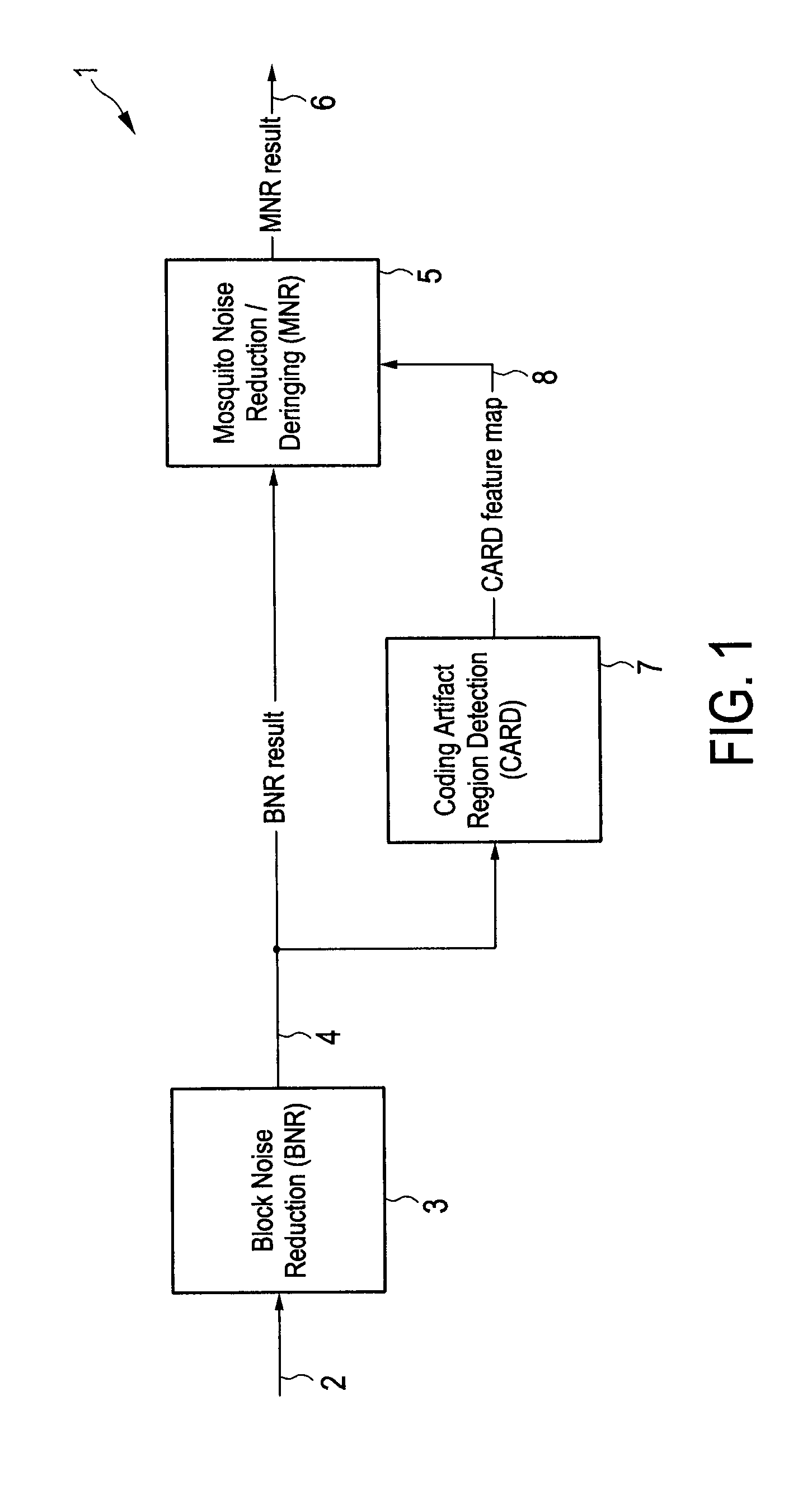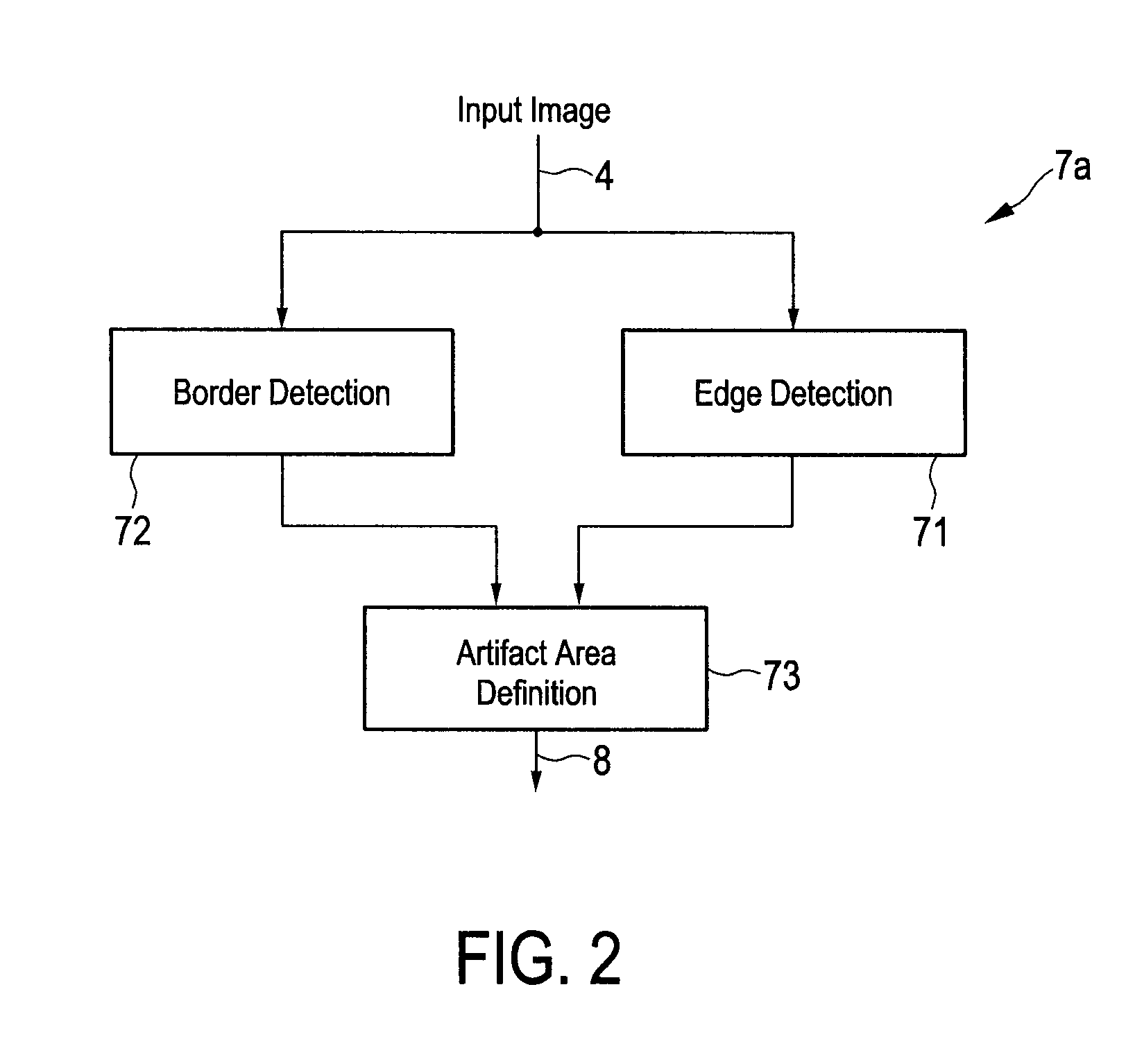Method and apparatus for detecting coding artifacts in an image
a technology of coding artifacts and images, applied in image analysis, image enhancement, instruments, etc., can solve the problems of content quality loss, low resolution and frame rate of distributed video content, and limited data rate and storage capacity, so as to reduce coding artifacts and achieve fast, simple and reliable effects
- Summary
- Abstract
- Description
- Claims
- Application Information
AI Technical Summary
Benefits of technology
Problems solved by technology
Method used
Image
Examples
first embodiment
[0039]The typical areas for the occurrence of visible ringing artifacts and mosquito noise and the potential results for a flat versus texture discrimination and an edge detection are depicted in FIG. 3 showing the one-dimensional distribution of the pixel values (amplitudes) of an image. Therein, an edge 10 and the determined edge position 11 are shown. Further, a texture area 12, one (FIG. 3A) or two (FIG. 3B) flat area(s) 13 and the determined border position(s) 14 between said texture area 12 and said flat area(s) 13 are shown. According to the present invention the area between said edge position 11 and said border position(s) 14 are defined as artifact area(s) 15.
[0040]As mentioned, FIG. 3 shows a one-dimensional distribution of pixel values. In practice, generally the pixel values are distributed two-dimensionally, e.g. in two perpendicular directions of a Cartesian grid, and the method of the present invention can be equally applied on such two-dimensional distributions. For...
second embodiment
[0053]In a second embodiment illustrated in FIG. 7B said dilated border area is defined 19 by defining a block of a number of dilated border area pixels around the border pixels of the detected border position 14, in particular around each border pixel of the detected border position 14, and by including the dilated border area pixels into said dilated border area 19.
[0054]For the edge detection a known Canny edge detector can be used. The gradient threshold used in this method defines the strength of the edges around that the artifacts shall be detected. In general a high threshold level is prone to miss important edge information, while a low threshold level is prone to have many false positives. While generally a global threshold value can be assigned and used, a threshold level globally and optimally fitting all input material is generally not available. Therefore, the threshold level is generally matched to the quality level of the input material, which can be derived e.g. from...
PUM
 Login to View More
Login to View More Abstract
Description
Claims
Application Information
 Login to View More
Login to View More - R&D
- Intellectual Property
- Life Sciences
- Materials
- Tech Scout
- Unparalleled Data Quality
- Higher Quality Content
- 60% Fewer Hallucinations
Browse by: Latest US Patents, China's latest patents, Technical Efficacy Thesaurus, Application Domain, Technology Topic, Popular Technical Reports.
© 2025 PatSnap. All rights reserved.Legal|Privacy policy|Modern Slavery Act Transparency Statement|Sitemap|About US| Contact US: help@patsnap.com



